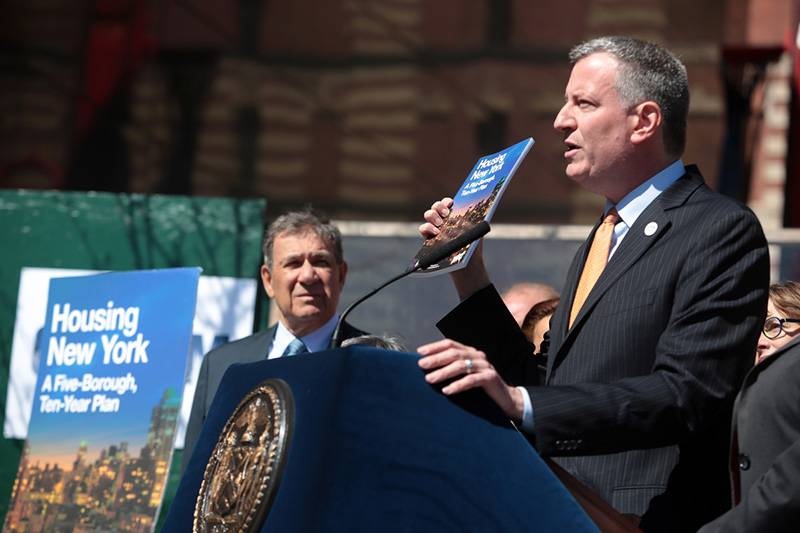NYC Mayor “Thinks Big” with New $41B Affordable Housing Plan
New York City Mayor Bill de Blasio has unveiled his $41 billion plan for addressing the ever-increasing need for affordable housing — for both low- and middle-income individuals — in New York City. The Housing New York: A Five-Borough, Ten-Year Plan is an ambitious endeavor, to say the least.
 By Barbra Murray, Contributing Editor
By Barbra Murray, Contributing Editor
New York City Mayor Bill de Blasio has unveiled his $41 billion plan for addressing the ever-increasing need for affordable housing — for both low- and middle-income individuals — in New York City. The Housing New York: A Five-Borough, Ten-Year Plan is an ambitious endeavor, to say the least.
“This plan thinks big — because it has to,” de Blasio stated. According to a report released by NYU Furman Center and Capital One last month, more than one million households in New York City are rent-burdened, or paying in excess of 30 percent of the household income, with approximately 600,000 of those households being severely rent-burdened, or paying more than 50 percent of their income on rent.
“Affordable housing is an issue that, a lot of times, has been overlooked, and the needs are very great, from the lowest-income people to people who are basically considered middle income,” Beth Mullen, national director in the affordable housing industry practice of national accounting, tax and advisory firm CohnReznick, told Commercial Property Executive. “The need is substantial.”
The mayor’s proposal calls for the construction of 80,000 new residential units and the rehabilitation of 120,000 existing apartments spanning the Bronx, Brooklyn, Queens, Staten Island and Manhattan, where, according to the NYU Furman Center/Capital One study, rents rose 19 percent between 2005 and 2012.
In addition to addressing the needs for both low- and middle-income families, De Blasio’s multi-pronged effort will involve a move to protect tenants in affordable housing from the growing wave of deregulation and the creation of a neighborhood planning strategy to pinpoint areas where opportunities for more housing exist. Another facet of the plan involves the reduction of barriers in the development process by updating regulations and reconfiguring agency processes.
Affordable housing has taken on new meaning. Perhaps the most unique element of the mayor’s plan is the incorporation of the middle-income groups. Mullen believes de Blasio’s effort will spur other jurisdictions to address the issue more fervently. “It absolutely adds to the national debate on this topic,” she said. “Other cities are having the same kinds of issues where the incomes of moderate-income families, not the lowest income families, but the workforce — the nurses, the policeman, the firemen, all of those folks who are critical to the success of a city — are being priced out of the (rental) housing market. I don’t know if anybody completely focused on it before.”
Look for further coverage of this announcement.







You must be logged in to post a comment.